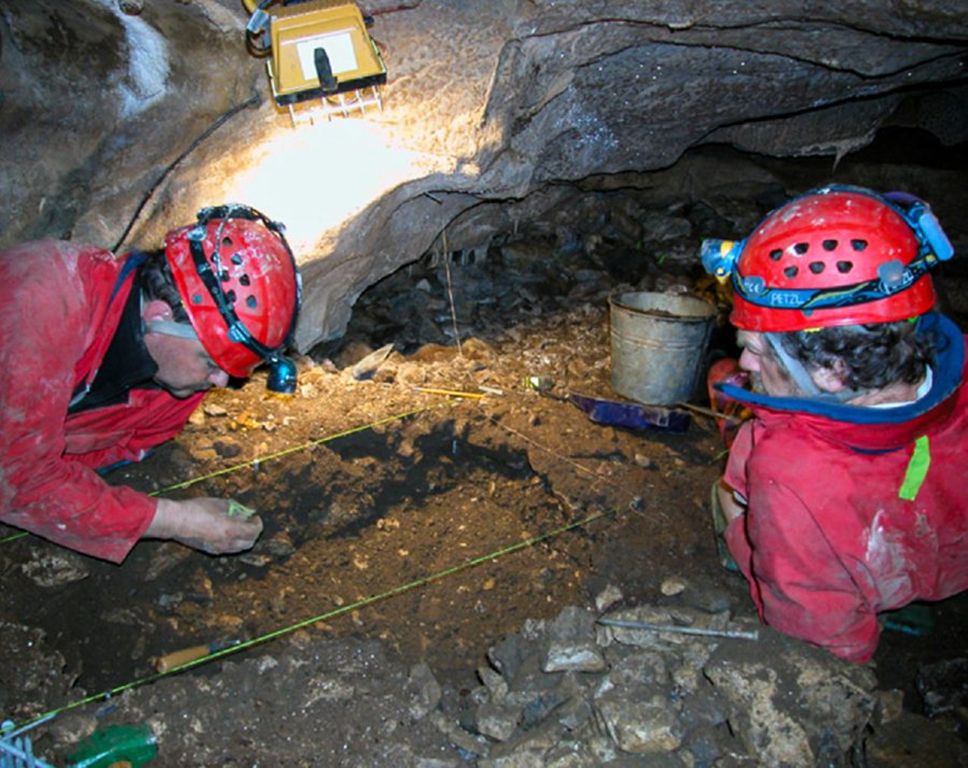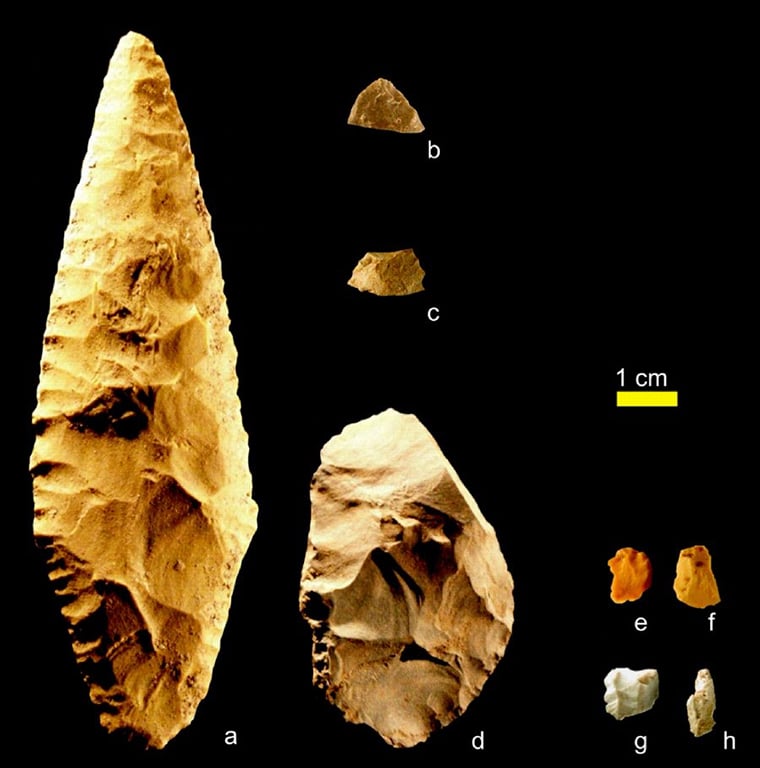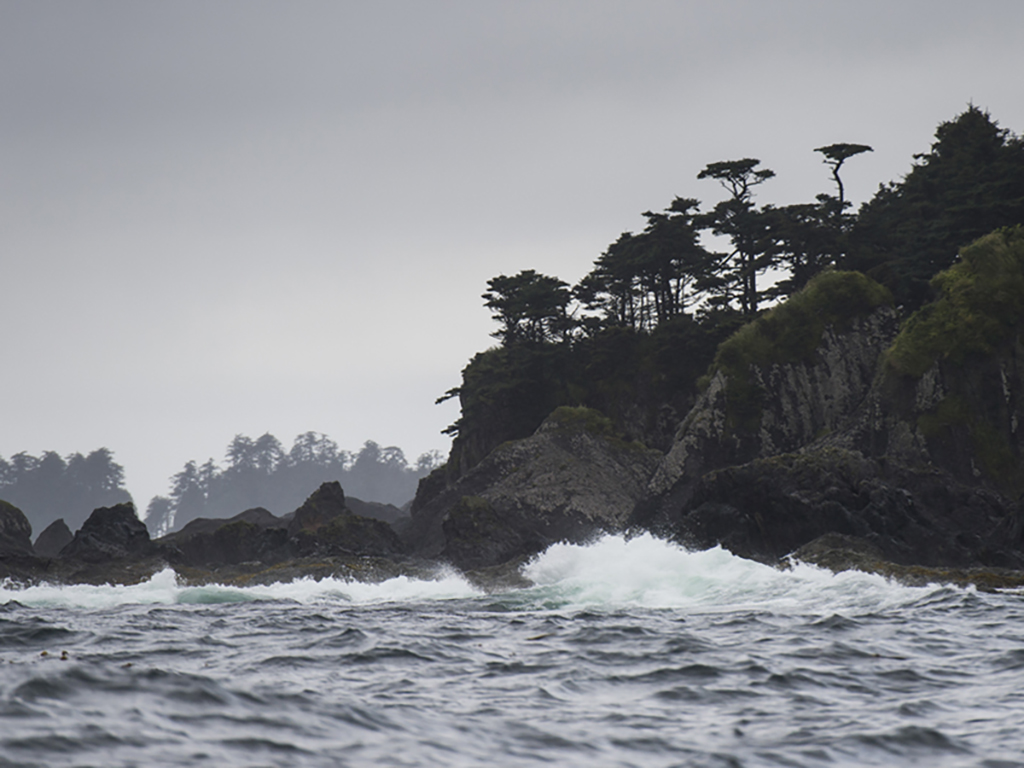When Quentin Mackie first crawled into a limestone cave on the west coast of Haida Gwaii, an archipelago off B.C.’s north coast, he wasn’t expecting to enjoy the experience. The cave was cold, cramped and damp.
Yet Mackie, an archaeologist with the University of Victoria, found the long days excavating underground quite pleasant: the heightened sensory experience in the passages was amazing, he says. One time, while they were taking a break in a pitch-black cave on Moresby Island, Tim Heaton, a paleontologist from the University of South Dakota, opened a juice box 10 metres away, filling the tunnel with the overwhelming odour of grapefruit.
But the joys of digging in a dark cave paled in comparison to the thrill from what was lying hidden underfoot — a stone spearpoint, evidence that people had been in or near this very cave thousands of years ago.
“We had no expectation that we would find artifacts in those caves,” Mackie says.
The goal for Mackie and his team, a mix of archaeologists and volunteers, was to recover animal remains to help reconstruct the ancient environment. Haida Gwaii features a limestone terrain, which the groundwater has eroded into a network of karst caves that are cool, dark, slightly alkaline and difficult to access, the perfect conditions for preserving animal remains and artifacts.
Nearly two decades ago, Heaton found that first stone spearpoint in a Moresby Island cave called K1. Since then, the team has excavated two other caves — Gaadu Din 1 and Gaadu Din 2 — on Haida Gwaii’s Huxley Island, one of the smaller islands in the archipelago. The digs, conducted in collaboration with the Haida Nation and Parks Canada, have recovered other tools and animal remains — including the oldest reported evidence of domesticated dogs in the Americas. The findings were recently published, providing insight into life on Haida Gwaii more than 10,000 years ago and a tantalizing glimpse of what might be found in its many other caves.
“All three of [the caves] had archaeological evidence, so my guess is that there are hundreds of comparable caves on the coast,” says Mackie.
The public is prohibited from entering caves on Haida Gwaii. Research is only conducted by permitted archaeologists.

Caves are magnets for animals and people, explains Daryl Fedje, an archaeologist at the Hakai Institute in B.C. and lead author of the study. (The Hakai Institute and Hakai Magazine are both part of the Tula Foundation. The magazine is editorially independent of the institute and foundation.)
But unlike in other parts of the world, where caves have yielded many archaeological insights, cave excavations aren’t common in B.C. Archaeologists in the province are typically hired to assess proposed development or logging sites, not to explore caves — though they do also conduct research excavations at known villages and intertidal sites.
Several field seasons spent excavating at the three caves on Haida Gwaii — which are all protected under Haida law and the Canada National Parks Act — revealed a range of uses. K1 and Gaadu Din 1 were likely bear dens used up to 13,400 years ago. There, the team found weapons, including spearpoints and stone flake tools, that are more than 11,000 years old. Fedje says these artifacts were probably brought in by impaled animals or by hunters butchering their catch. Meanwhile, hunters likely used Gaadu Din 2 as a temporary camp between 12,500 and 10,700 years ago. Fedje notes that the team found a hearth, stone tools and resharpening flakes in this cave.
Among the animal bones collected from the caves are the remains of brown bears and deer. Both species appear to have been extirpated from the archipelago by the end of the Pleistocene, around 11,700 years ago — though deer were later reintroduced. While brown bears are common on the B.C. mainland, this is the first evidence they were ever on Haida Gwaii, Fedje says. This work has “developed into an incredible story that tells a huge amount about the history of the environment and people.”
By far the most striking of the animal remains, though, was a tooth. Using DNA analysis and radiocarbon dating, the team determined it came from a domestic dog that lived 13,100 years ago — the oldest evidence of domestic dogs ever reported in the Americas. What’s more, dogs are “a proxy for the presence of humans,” Mackie says. This find extends the length of human occupation of Haida Gwaii as recorded by archaeological evidence by 2,000 years — though Fedje expects more searching will reveal artifacts that push this back even further.

Loren Davis, an archaeologist at Oregon State University who was not involved in the study, says these findings are exciting. The dog tooth, in particular, “was a massive discovery.” Haida Gwaii and coastal B.C. lie at the doorstep to the Americas, he says, so learning more about the early cultural and environmental record of the region has significant implications for understanding what life was like for early inhabitants.
Skil Hiilans Allan Davidson, a Haida Hereditary Chief and archaeologist who took part in the excavations at all three caves, emphasizes that artifacts and animal remains are more than just ancient discoveries. Whether it’s a bear mandible or a fossilized human footprint, archaeological and paleontological findings have meaning for Indigenous people. Haida people have lived on and cared for Haida Gwaii for thousands of years, Davidson explains. His nation’s Oral Histories recount Haida people’s deep history in this region, and Western archaeology is just now starting to catch up.
Q̓íx̌itasu Elroy White, a Heiltsuk archaeologist and owner of Central Coast Archaeology, who was not involved in the study, was pleased to see that the authors included Oral Histories in their published work, but wished they had highlighted the importance of the stories by prioritizing them higher up in the paper. He would also like to see non-Indigenous archaeologists translate their findings into relevant Indigenous languages when they’ve conducted research in First Nations communities.
Mackie agrees that understanding Indigenous histories and a deeper cultural context makes for better archaeology. “Through the trowel is not the only way to know about deep human history,” he says. ![]()
Read more: Indigenous, Science + Tech
















Tyee Commenting Guidelines
Comments that violate guidelines risk being deleted, and violations may result in a temporary or permanent user ban. Maintain the spirit of good conversation to stay in the discussion.
*Please note The Tyee is not a forum for spreading misinformation about COVID-19, denying its existence or minimizing its risk to public health.
Do:
Do not: